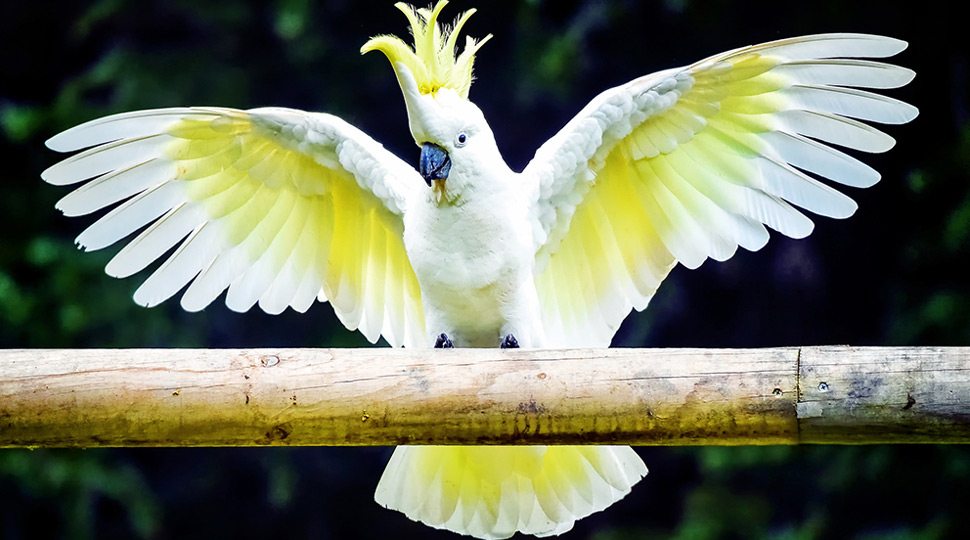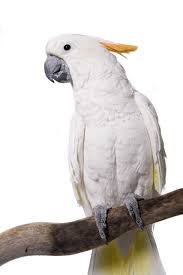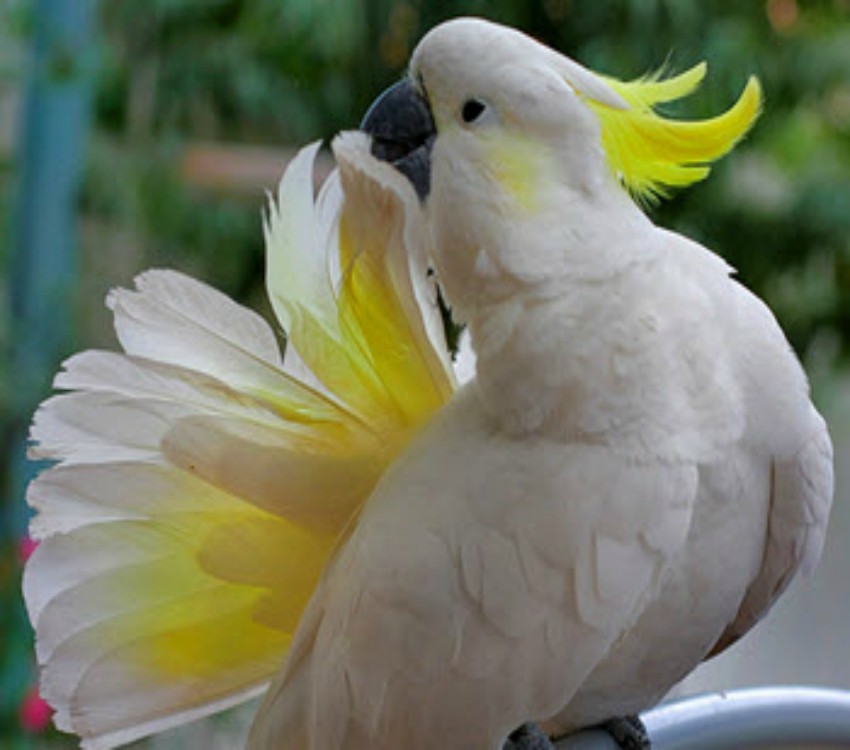
There are numerous species of cockatoos, but the most common in captivity (in no particular order) are the Moluccan, Goffin’s, umbrella, sulfur crested (greater and lesser), and bare-eyed cockatoos.
Remember that they are exotic creatures, not fully tamed dogs or cats. Exotic pets, particularly noisy ones like cockatoos, are not always welcome in apartments.
A young white cockatoo may be sociable and like being held, but this generally changes as the bird becomes older.
Expected Life Span
With adequate care, cockatoos can live for 40 years (smaller species) to 80 years or more (bigger species). Unfortunately, many animals in captivity die far younger than this.
Size
Cockatoos are distinguished by the feathered crest on their heads. They can elevate or flatten their crest, and they frequently raise it when irritated or aroused.
They are typically white or gray, however, a few species are black. On their tail or head, they may have a little yellow or red patch. They do not have the same brilliant plumage as other parrots.
Cockatoos range in size from about 12 inches to about 27 inches. Those on the smaller size include Goffin’s cockatoo, the rose-breasted cockatoo , and the lesser sulfur-crested cockatoo, while the larger cockatoos included the umbrella, Moluccan, and greater sulfur-crested cockatoos.
The cockatoo’s bills are curled and quite powerful. They keep their bills sharp by scratching their mandibles together when resting. They also chew wood to sharpen their beaks. Though this is great in the wild, in cities, they occasionally chew on buildings, patio furniture, wires, and satellite dishes, becoming pests to homeowners.
Temperament
Cockatoos are energetic and friendly birds. They have a “cuddly” personality and form strong bonds with their owners. However, due to their friendliness and need for affection, they require a significant amount of time from their owners. When cockatoos are deprived of affection, they grow melancholy or exhibit neurotic tendencies. They are intelligent, playful, mischievous, and can be extremely loud. They are somewhat excitable and may not always interact well with young children.

Vocalizations/Speech
Cockatoos aren’t as well-known as some other parrots for their ability to mimic speech, but they do have quite strong communication capabilities. There is a great deal of variance between individuals, as well as possibly some species variation.
Cages
Smaller cockatoos should have a cage no smaller than 24-by-36-by-48 inches with a bar spacing of 3/4 inch to 1 inch, whereas larger cockatoos require a cage that is about 24-by-48-by-48 inches with a bar spacing of 1 inch to 1.5 inches. The bigger the cage, the better. A robust cage (worked iron or stainless steel) is required to withstand the cockatoo’s fierce beak. Horizontal bar wires allow the cockatoo to exercise by climbing the cage’s sides.
Feeding
Cockatoos require a wide variety of fresh meals as well as a high-quality avian pellet diet. Pellets can account for up to 50% of the diet, with the remainder made up of freshly prepared items (vegetables, fruits, cereals, etc.). Seeds and seed mixtures should be used sparingly because they are heavy in fat. Nuts can also be served as a special treat.
Cockatoos utilize their huge, nimble tongues to break open seeds. In captivity, they are frequently fed pellets designed to cover many of their nutritional requirements, but at least 40% of their diet should be supplemented with other items. Many of these pellets are designed for specific species of cockatoo.
Toys
Cockatoos enjoy chewing and destroying things, so supplying chewable toys is essential. Softwood toys, tree branches, vegetable-tanned leather, rope toys (supervised use), bells, and cardboard can all be provided. Provide both hanging toys and toys that can be picked up with your feet. Cockatoos enjoy toys with hanging strands because they resemble preening behavior. All bird toys must be safe and hung properly.
Predators
Large birds such as falcons and eagles can pose a threat to cockatoos.
Lizards that climb the trees and penetrate the hollows where the eggs are placed will occasionally consume the eggs in the nest. Pythons and rats can pose a threat to the eggs.
If the nest becomes flooded because of excessive rain, the young may be at risk.
Concerns
Cockatoos make feather dust. Special feathers (powder down) provide a fine powder for preening. This powder produces fine dust, which settles throughout the houses of cockatoo owners and can induce allergies.
Owners need to be prepared for a bit of a mess and having household items chewed. Cockatoos tend to like to play with (toss) their food and chew on everything
Cockatoos appear to be prone to neurotic behavior, such as feather picking and self-mutilation, particularly when denied the affection and attention they require.
Breeding
Cockatoos are monogamous breeders who mate for life. They pair up in flocks often up to a year before breeding.
Females are usually three to seven years old before they breed for the first time. Males are even older.
They breed in nests or cavities in trees, just like other parrots. They can’t make these holes themselves, so they have to look for hollows left by decaying wood or other animals like woodpeckers. They frequently compete for these nests with other members of the same flock.
The cockatoo selects a nest that is only slightly larger than its body. They line the nest with wood and leaves.
Eggs measure one to two inches in size. They are oval-shaped and usually white. The eggs are hidden in tree nests, thus no camouflage is required. Some species lay only one egg, while others contain clutches of two to eight eggs. Incubation lasts from twenty to twenty-nine days.
After the eggs hatch, juvenile birds might spend five to eleven weeks nesting.
Young birds stay with their parents for up to one year.
Cockatoo
Small children shouldn’t be allowed around a cockatoo. It can be dangerous to the child and the bird.
To purchase a bird, you need to go to a specialty store that deals with exotic birds and can explain their requirements to you. Breeders are another viable alternative. Visit the breeder to view the setting in which the birds are maintained. An experienced breeder can help you create a safe home for your bird. Keep in mind that they are trying to sell you a bird and may not always be completely honest about the care and commitment required. Another option for finding cockatoos to adopt is through bird rescue organizations.
Some people think they should buy two cockatoos and keep them together.

